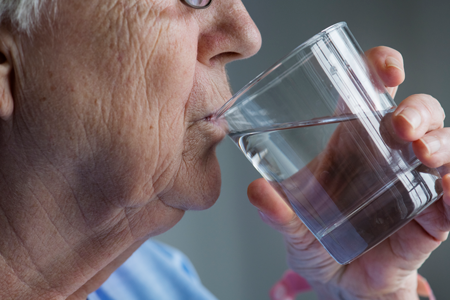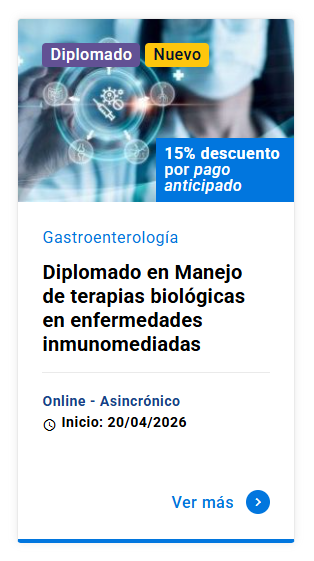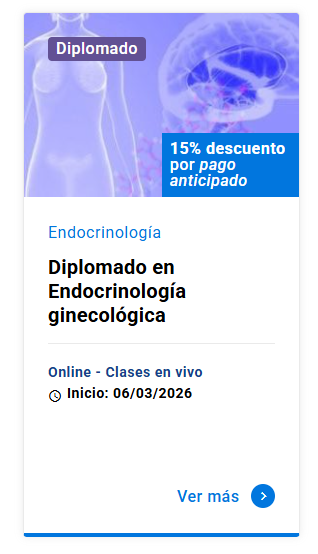Enfrentamiento fisiopatológico del paciente con hiponatremia. Diagnóstico diferencial y tratamiento
DOI:
https://doi.org/10.11565/arsmed.v50i3.2119Palabras clave:
hiponatremia, osmolalidad, fisiopatología, SIADH, solución salina hipertónicaResumen
La hiponatremia ([Na+] plasmático <135 mEq/L) es el trastorno hidroelectrolítico más frecuente, sin embargo, no siempre traduce un estado de hipotonía del agua corporal (Osm plasmática <275 mOsm/kg). Los mecanismos subyacentes a una hiponatremia hipotónica son la sobrecarga acuosa y/o una excreción ineficiente de agua libre a nivel renal. Múltiples causas pueden provocar este trastorno, pero reconocer su etiología es un gran desafío. Se requiere una evaluación clínica completa junto a un análisis de laboratorio exhaustivo, ya que no basta un parámetro aislado. La severidad de una hiponatremia depende de la etiología, intensidad y velocidad de instauración, así, un diagnóstico inadecuado junto a una corrección apresurada pueden generar más daño. Por otro lado, existen muchas controversias respecto a la mejor forma de realizar un tratamiento óptimo. En esta revisión se presenta un enfoque fisiopatológico que permite interpretar los mecanismos patogénicos, diagnosticar el trastorno y sus causas específicas, corregir el estado de hipotonía y gestionar de manera adecuada y segura al paciente con hiponatremia.
Descargas
Citas
Adrogué HJ, Tucker BM & Madias NE. (2022). Diagnosis and Management of Hyponatremia: A Review. Journal of the American Medical Association : JAMA 328, 280–291. https://doi.org/10.1001/jama.2022.11176 DOI: https://doi.org/10.1001/jama.2022.11176
Ayus JC, Moritz ML, Fuentes NA, Mejia JR, Alfonso JM, Shin S, Fralick M & Ciapponi A. (2025). Correction Rates and Clinical Outcomes in Hospitalized Adults With Severe Hyponatremia: A Systematic Review and Meta-Analysis. JAMA Internal Medicine 185, 38-51. https://doi.org/10.1001/jamainternmed.2024.5981 DOI: https://doi.org/10.1001/jamainternmed.2024.5981
Aziz F, Sam R, Lew SQ, Massie L, Misra M, Roumelioti ME, Argyropoulos CP, Ing TS & Tzamaloukas AH. (2023). Pseudohyponatremia: Mechanism, Diagnosis, Clinical Associations and Management. Journal of Clinical Medicine 12, 4076. https://doi.org/10.3390/jcm12124076 DOI: https://doi.org/10.3390/jcm12124076
Baek SH, Jo YH, Ahn S, Medina-Liabres K, Oh YK, Lee JB & Kim S. (2021). Risk of Overcorrection in Rapid Intermittent Bolus vs Slow Continuous Infusion Therapies of Hypertonic Saline for Patients With Symptomatic Hyponatremia: The SALSA Randomized Clinical Trial. JAMA Internal Medicine 181, 81-92. https://doi.org/10.1001/jamainternmed.2020.5519 DOI: https://doi.org/10.1001/jamainternmed.2020.5519
Berl T, Quittnat-Pelletier F, Verbalis JG, Schrier RW, Bichet DG, Ouyang J, Czerwiec FS & SALTWATER Investigators. (2010). Oral tolvaptan is safe and effective in chronic hyponatremia. Journal of the American Society of Nephrology : JASN 21, 705-712. https://www.google.com/search?q=https://doi.org/10.1681/ASN.2009080857 DOI: https://doi.org/10.1681/ASN.2009080857
Burst V. (2019). Etiology and epidemiology of hyponatremia. Frontiers of Hormone Research 52, 24-35. https://doi.org/10.1159/000493234 DOI: https://doi.org/10.1159/000493234
Chen J. (2023). Is there a causal relationship between hypothyroidism and hyponatremia? Therapeutic Advances in Endocrinology and Metabolism 14, 20420188231180983. https://doi.org/10.1177/20420188231180983 DOI: https://doi.org/10.1177/20420188231180983
Chung HM, Kluge R, Schrier RW & Anderson RJ. (1987). Clinical assessment of extracellular fluid volume in hyponatremia. The American Journal of Medicine 83, 905-908. https://www.google.com/search?q=https://doi.org/10.1016/0002-9343(87)90649-8 DOI: https://doi.org/10.1016/0002-9343(87)90649-8
Combs S & Berl T. (2014). Dysnatremias in patients with kidney disease. American Journal of Kidney Diseases: AJKD 63, 294-303. https://doi.org/10.1053/j.ajkd.2013.09.017 DOI: https://doi.org/10.1053/j.ajkd.2013.09.017
Danziger J & Zeidel ML. (2015). Osmotic homeostasis. Clinical Journal of the American Society of Nephrology : CJASN 10, 852-862. https://doi.org/10.2215/CJN.10741013 DOI: https://doi.org/10.2215/CJN.10741013
Duarte JD & Cooper-DeHoff RM. (2010). Mechanisms for blood pressure lowering and metabolic effects of thiazide and thiazide-like diuretics. Expert Review of Cardiovascular Therapy 8, 793-802. https://doi.org/10.1586/erc.10.27 DOI: https://doi.org/10.1586/erc.10.27
Ellison DH & Berl T. (2007). Clinical practice. The syndrome of inappropriate antidiuresis. The New England Journal of Medicine : NEJM 356, 2064-2072. https://doi.org/10.1056/NEJMcp066837 DOI: https://doi.org/10.1056/NEJMcp066837
Hoorn E & Zietse R. (2017). Diagnosis and Treatment of Hyponatremia: Compilation of the Guidelines. Journal of the American Society of Nephrology : JASN 28, 1340-1349. https://doi.org/10.1681/ASN.2016101139 DOI: https://doi.org/10.1681/ASN.2016101139
Hsiao PJ, Liao CY, Kao YH, Chan JS, Lin YF, Chuu CP & Chen JS. (2020). Comparison of fractional excretion of electrolytes in patients at different stages of chronic kidney disease: A cross-sectional study. Medicine (Baltimore) 99 (2), e18709. https://www.google.com/search?q=https://doi.org/10.1097/MD.0000000000018709 DOI: https://doi.org/10.1097/MD.0000000000018709
Kim GH, Lee JW, Oh YK, Chang HR, Joo KW, Na KY, Earm JH, Knepper MA & Han JS. (2004). Antidiuretic effect of hydrochlorothiazide in lithium-induced nephrogenic diabetes insipidus is associated with upregulation of aquaporin-2, Na-Cl co-transporter, and epithelial sodium channel. Journal of the American Society of Nephrology : JASN 15, 2836-2843. https://doi.org/10.1097/01.ASN.0000143476.93376.04 DOI: https://doi.org/10.1097/01.ASN.0000143476.93376.04
Liamis G, Filippatos TD, Liontos A & Elisaf MS. (2017). MANAGEMENT OF ENDOCRINE DISEASE: Hypothyroidism-associated hyponatremia: mechanisms, implications and treatment. European Journal of Endocrinology 176, 15-20. https://doi.org/10.1530/EJE-16-0493 DOI: https://doi.org/10.1530/EJE-16-0493
Lien YH, Shapiro JI & Chan L. (1991). Study of brain electrolytes and organic osmolytes during correction of chronic hyponatremia. Implications for the pathogenesis of central pontine myelinolysis. The Journal of Clinical Investigation: JCI 88, 303-309. https://doi.org/10.1172/JCI115292 DOI: https://doi.org/10.1172/JCI115292
Lindner G, Schwarz C, Haidinger M & Ravioli S. (2022). Hyponatremia in the emergency department. The American Journal of Emergency Medicine 60, 1-8. https://doi.org/10.1016/j.ajem.2022.07.023 DOI: https://doi.org/10.1016/j.ajem.2022.07.023
Lumpkin MD, Samson WK & McCann SM. (1987). Arginine vasopressin as a thyrotropin-releasing hormone. Science 235, 1070-1073. https://doi.org/10.1126/science.2881350 DOI: https://doi.org/10.1126/science.2881350
MacMillan TE, Shin S, Topf J, Kwan JL, Weinerman A, Tang T, Raissi A, Koppula R, Razak F, Verma AA & Fralick M. (2023). Osmotic Demyelination Syndrome in Patients Hospitalized with Hyponatremia. NEJM Evidence 2, EVIDoa2200215. https://doi.org/10.1056/EVIDoa2200215 DOI: https://doi.org/10.1056/EVIDoa2200215
Maesaka JK, Imbriano LJ, Pinkhasov A, Muralidharan R, Song X, Russo LM & Comper WD. (2021). Identification of a Novel Natriuretic Protein in Patients With Cerebral-Renal Salt Wasting-Implications for Enhanced Diagnosis. The American Journal of the Medical Sciences 361, 261-268. https://doi.org/10.1016/j.amjms.2020.07.015 DOI: https://doi.org/10.1016/j.amjms.2020.07.015
Maesaka JK, Imbriano LJ, Grant C & Miyawaki N. (2022). New Approach to Hyponatremia: High Prevalence of Cerebral/Renal Salt Wasting, Identification of Natriuretic Protein That Causes Salt Wasting. Journal of Clinical Medicine 11, 7445. https://doi.org/10.3390/jcm11247445 DOI: https://doi.org/10.3390/jcm11247445
Moritz ML. (2019). Why 0.9% saline is isotonic: understanding the aqueous phase of plasma and the difference between osmolarity and osmolality. Pediatric Nephrology 34, 1299-1300. https://www.google.com/search?q=https://doi.org/10.1007/s00467-018-4084-2 DOI: https://doi.org/10.1007/s00467-018-4084-2
Morris JH, Bohm NM, Nemecek BD, Crawford R, Kelley D, Bhasin B, Nietert PJ & Velez JCQ. (2018). Rapidity of Correction of Hyponatremia Due to Syndrome of Inappropriate Secretion of Antidiuretic Hormone Following Tolvaptan. American Journal of Kidney Diseases: AJKD 71, 772–782. https://doi.org/10.1053/j.ajkd.2017.12.002 DOI: https://doi.org/10.1053/j.ajkd.2017.12.002
Musso CG & Oreopoulos DG. (2011). Aging and physiological changes of the kidneys including changes in glomerular filtration rate. Nephron Physiology 119, 1-5. https://doi.org/10.1159/000328010 DOI: https://doi.org/10.1159/000328010
Park CW, Shin YS, Ahn SJ, Kim SY, Choi EJ, Chang YS & Bang BK. (2001). Thyroxine treatment induces upregulation of renin-angiotensin- aldosterone system due to decreasing effective plasma volume in patients with primary myxoedema. Nephrology Dialysis Transplantation : NDT 16, 1799-1806. https://www.google.com/search?q=https://doi.org/10.1093/ndt/16.9.1799 DOI: https://doi.org/10.1093/ndt/16.9.1799
Pliquett RU & Obermüller N. (2022). Endocrine Testing for the Syndrome of Inappropriate Antidiuretic Hormone Secretion (SIADH). In: EndoText [Internet] ed. Feingold KR, Ahmed SF, Anawalt B, et al. Endotext. MDText.com, Inc.
Refardt J, Imber C, Sailer CO, Jeanloz N, Potasso L, Kutz A, Widmer A, Urwyler SA, Ebrahimi F, Vogt DR, Winzeler B & Christ-Crain M. (2020). A Randomized Trial of Empagliflozin to Increase Plasma Sodium Levels in Patients with the Syndrome of Inappropriate Antidiuresis. Journal of the American Society of Nephrology : JASN 31, 615-624. https://doi.org/10.1681/ASN.2019090944 DOI: https://doi.org/10.1681/ASN.2019090944
Refardt J, Winzeler B & Christ-Crain M. (2019). Copeptin and its role in the diagnosis of diabetes insipidus and the syndrome of inappropriate antidiuresis. Clinical Endocrinology 91, 22-32. https://www.google.com/search?q=https://doi.org/10.1111/cen.13991 DOI: https://doi.org/10.1111/cen.13991
Schrier RW, Gross P, Gheorghiade MT, Verbalis JG, Czerwiec FS, Orlandi C & SALT Investigators. (2006). Tolvaptan, a selective oral vasopressin V2-receptor antagonist, for hyponatremia. The New England Journal of Medicine : NEJM 355, 2099-2112. https://doi.org/10.1056/NEJMoa065181 DOI: https://doi.org/10.1056/NEJMoa065181
Schück O. (1984). Dilution of the Urine. En: Examination of Kidney Function, ed. Schück O, pp. 133-156. Springer Dordrecht Boston. DOI: https://doi.org/10.1007/978-94-009-5660-5_6
Singh TD, Fugate JE, & Rabinstein AA. (2014). Central pontine and extrapontine myelinolysis: a systematic review. European journal of neurology 21, 1443–1450. https://doi.org/10.1111/ene.12571 DOI: https://doi.org/10.1111/ene.12571
Sklar AH & Linas SL. (1983). The osmolal gap in renal failure. Annals of Internal Medicine 98, 481-482. https://doi.org/10.7326/0003-4819-98-4-481 DOI: https://doi.org/10.7326/0003-4819-98-4-481
Spasovski G. (2024). Hyponatremia - Treatment standard 2024. Nephrology Dialysis Transplantation : NDT 39, 1583-1592. https://doi.org/10.1093/ndt/gfae162 DOI: https://doi.org/10.1093/ndt/gfae162
Sterns RH, Nigwekar SU & Hix JK. (2009). The treatment of hyponatremia. Seminars in Nephrology 29, 282-299. https://doi.org/10.1016/j.semnephrol.2009.03.002 DOI: https://doi.org/10.1016/j.semnephrol.2009.03.002
Sterns RH. (2015). Disorders of plasma sodium--causes, consequences, and correction. The New England Journal of Medicine : NEJM 372, 55-65. https://doi.org/10.1056/NEJMra1404489 DOI: https://doi.org/10.1056/NEJMra1404489
Sterns RH, Rondon-Berrios H, Adrogué HJ, Berl T, Burst V, Cohen DM, Christ-Crain M, Cuesta M, Decaux G, Emmett M, Garrahy A, Gankam-Kengne F, Hix JK, Hoorn EJ, Kamel KS, Madias NE, Peri A, Refardt J, Rosner MH, Sherlock M & PRONATREOUS Investigators. (2024). Treatment Guidelines for Hyponatremia: Stay the Course. Clinical Journal of the American Society of Nephrology : CJASN 19, 129–135. https://doi.org/10.2215/CJN.0000000000000244 DOI: https://doi.org/10.2215/CJN.0000000000000244
Tannen RL, Regal EM, Dunn MJ & Schrier RW. (1969). Vasopressin- resistant hyposthenuria in advanced chronic renal disease. The New England Journal of Medicine : NEJM 280, 1135-1141. https://doi.org/10.1056/NEJM196905222802101 DOI: https://doi.org/10.1056/NEJM196905222802101
Taplin CE, Cowell CT, Silink M & Ambler GR. (2006). Fludrocortisone therapy in cerebral salt wasting. Pediatrics 118, 1904-1908. https://doi.org/10.1542/peds.2006-0702 DOI: https://doi.org/10.1542/peds.2006-0702

Descargas
Publicado
Cómo citar
Licencia
Derechos de autor 2025 Rodrigo Andrés Sepúlveda Palamara, Joaquín Sharp-Segovia , Cristián Juanet-Lecaros , Eduardo Ávila-Jiménez

Esta obra está bajo una licencia internacional Creative Commons Atribución-CompartirIgual 4.0.
Los autores/as conservan sus derechos de autor y garantizan a la revista el derecho de primera publicación de su obra, la que estará simultáneamente sujeta a la Licencia CC BY-SA 4.0 (Ver declaración de Acceso Abierto).







